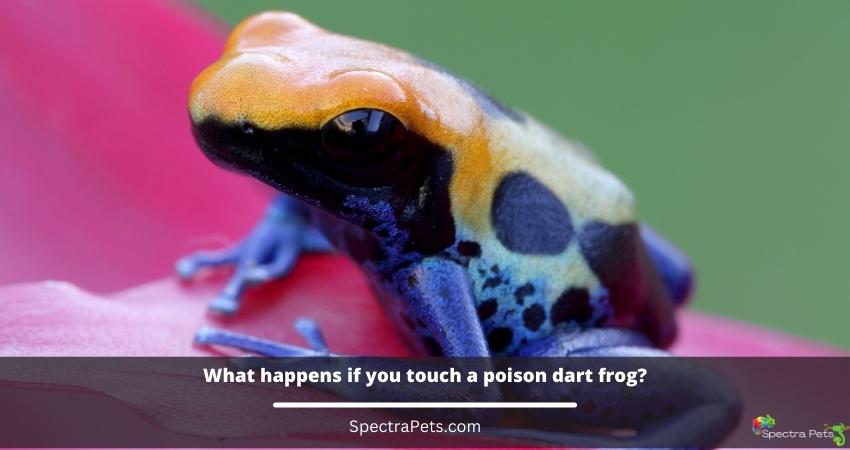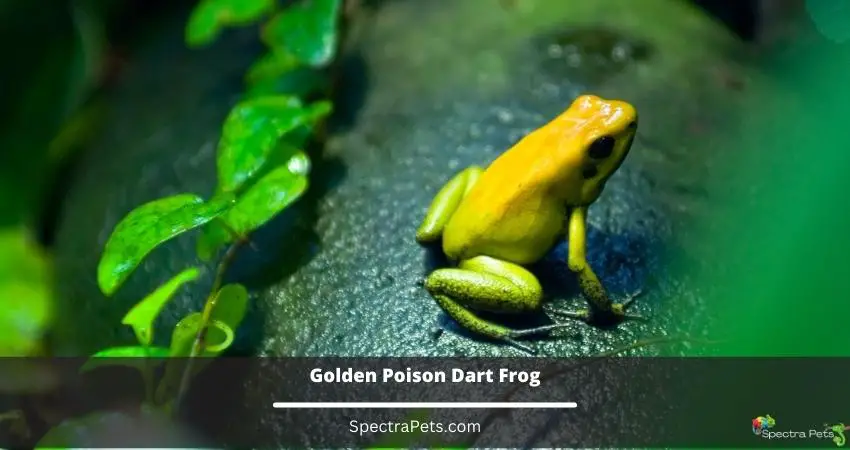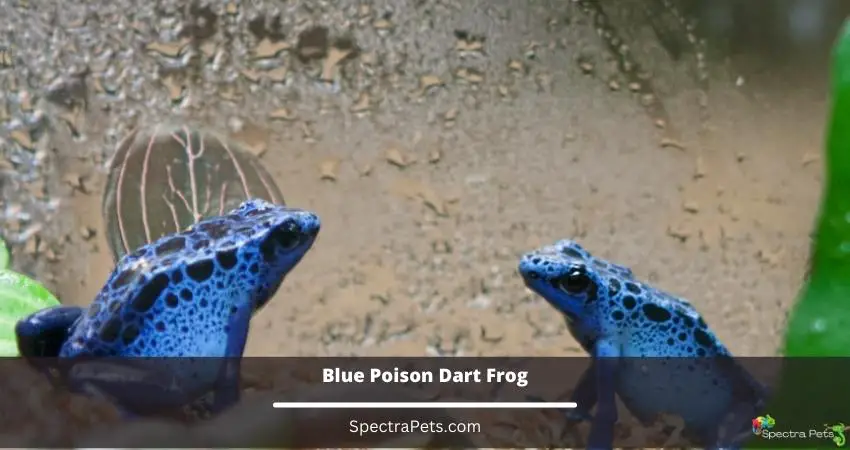Out of so many colorful frog species, the poison dart frog is an exotic collection. It has a lot of admirers despite it having toxins in them. They are also the center of a lot of curiosity.
What do you think would happen if you touched a poison dart frog? Would your skin just melt off? Probably not, but it’s still important to be careful when around these little critters.
The wild poison dart frogs secrete a toxin from their skin that can cause extreme pain, swelling, and even death. However, the captive-bred dart frogs are entirely safe to handle.
Dart frogs that live in forests consume a lot of insects and get massive amounts of toxins. On the contrary, in captivity, they eat cultured crickets, springtails, etc.
In this blog post, we’ll take a closer look at poison dart frogs and what makes the wild one so deadly and the captive one so safe!
What Happens If You Touch a Poison Dart Frog? ( Wild Frog)

Touching a poison dart frog can have serious consequences. These frogs secrete toxic chemicals through their skin, which can cause neurological damage, heart problems, and paralysis.
In some cases, touching a poison dart frog can even be fatal. Symptoms usually appear within minutes of contact and may include difficulties breathing, muscle weakness, and swelling around the area where the frog was touched.
If you or someone you know has been in contact with a poison dart frog, it’s important to seek medical attention immediately.
Are All Poison Dart Frogs poisonous?
No, not all poison dart frogs are poisonous—in fact, only about 1% of them are. The majority of poison dart frogs are found in Central and South America and typically measure just 1–2 inches in length.
These frogs get their name from the fact that indigenous tribes have used their toxins for hunting purposes for centuries. While most poison dart frogs are brightly colored, this is not always the case—some species are brown or black.
Consequently, it’s important to exercise caution around any frog that you come across in the wild and to never touch one unless you are absolutely sure that it is non-poisonous.
Let’s Introduce You To The Most Poisonous Frog in the World

In the animal kingdom, there are many creatures that are poisonous or venomous. But did you know that there is a frog so poisonous that just one gram of its venom is enough to kill 10 humans?
This frog is called the golden poison dart frog (Phyllobates terribilis), and it is found in the rainforests of Colombia. Read on to learn more about this amazing—and deadly—creature!
But how does it’s venom work?
Well, the golden poison dart frog’s skin contains a poisonous alkaloid called batrachotoxin. When predators try to eat the frog, this poison enters their bloodstream and causes paralysis.
In small doses, batrachotoxin can also cause heart failure in humans. There have been reports of indigenous people in Colombia using the frogs’ poison to tip their darts and arrows for hunting, hence the name “poison dart frog.”
These frogs can also produce other poisons which include the following:
- Allopumiliotoxin 267A: This poison can have a deadly effect on your heart.
- Histrionicotoxin: It has a comparative low-level effect, which means less poisonous. The highest it can do is damage your nervous system.
- Pumiliotoxin 251D: This poison of the golden dart frog can lead to an instant cardiac arrest, even death.’
Is the Golden Poison Dart Frog in captivity less poisonous?
You might be wondering whether captive-bred frogs are less venomous than their wild counterparts. After all, if they’ve never had to defend themselves from predators, surely their venom must be weaker, right?
Unfortunately, that doesn’t seem to be the case. Studies have shown that captive-bred golden poison dart frogs are just as poisonous as wild-caught frogs. So even if you’re not planning on going out into the Colombian rainforest anytime soon, it’s best to admire these creatures from afar!
How poisonous are other poison dart frogs in captivity?
The famous captive breeds are:
- Blue poison dart frog
- Green & black poison dart frog
- Bumble bee dart frog
- Strawberry poison dart frog and
- Dyeing poison dart frog
Let’s see how dangerous they are in captivity.
The Blue Poison Dart Frog is a beautiful species of frog that is found in the tropical rainforests of Central and South America. These frogs get their name from the fact that they are often used by indigenous people to make poison darts. But how venomous are they really?
Wild vs. Captive-Bred Blue Poison Dart Frogs

The level of toxicity in Blue Poison Dart frogs can vary depending on whether they are wild or captive-bred.
In the wild, these frogs feed on a diet of insects that are high in alkaloids. These alkaloids build up in the frog’s body and make them poisonous to predators.
However, when these frogs are bred in captivity, they are typically fed a diet of fruit flies and crickets that do not contain alkaloids. As a result, captive-bred Blue Poison Dart frogs are not poisonous.
Read More: What Do Dart Frogs Eat in the Rainforest?
How to Handle Blue Poison Dart Frogs Safely
If you’re thinking about getting a Blue Poison Dart frog as a pet, there’s no need to worry about being poisoned! However, there are still some safety precautions you should take when handling these frogs.
For example, it’s important to wash your hands thoroughly after handling them since they can carry bacteria that can cause skin infections. Additionally, you should never put your fingers or any other body part near their mouth since they can bite if they feel threatened.
And, in short, all the dart frogs I talked about earlier which include green & black poison dart frog, bumblebee dart frog, strawberry poison dart frog, and dyeing poison dart frog have the same level of toxicity in captivity.
Which means they don’t have excessive poison. But still, careful handling is always recommended.
Wrapping Up
So the bottom line is that the Golden Poison Dart Frog is the most lethal frog even in captivity. You have to deal with these frogs exceptionally carefully.
The rest of the frogs literally lose their poisonous potential due to a change in diet. Hopefully, this article helps you to know more about the poison dart frog and its effect on the human body.
